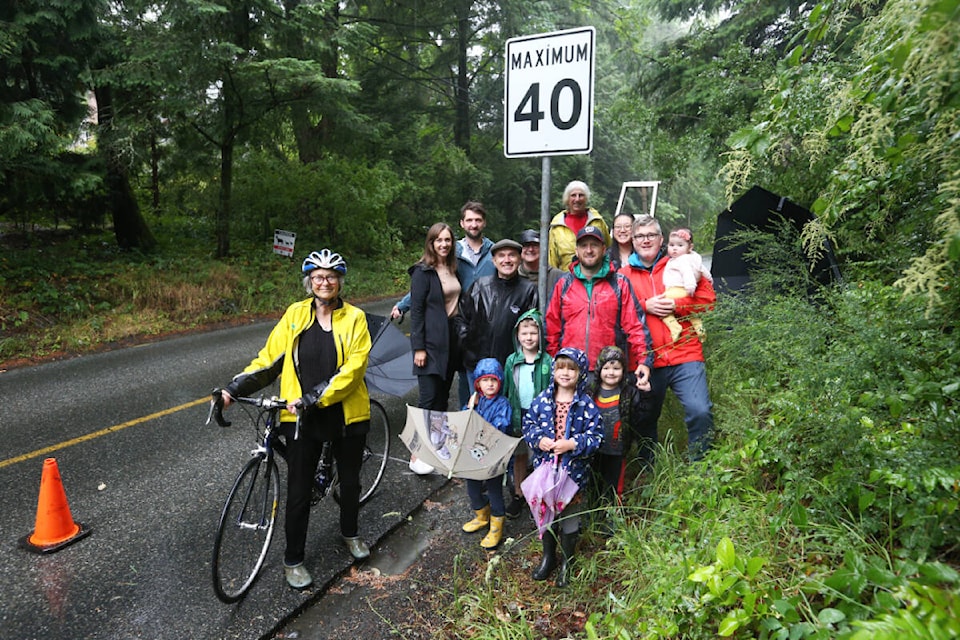A group of Saanich community activists gathered on a rainy Saturday (June 10) to celebrate success in their quest to convince the district to lower speed limits on some of its roads.
The advocacy campaign led by Livable Roads for Rural Saanich ultimately swayed the District of Saanich to lower speed limits on nine corridors, with signs installed on Oldfield, southern Old West Saanich, Sparton, and Prospect Lake roads as of late May, with the remaining five corridors expected to have their new speed limit signs installed by fall.
The roads previously had speed limits of 50 km/h, and will now have limits of 40 km/h. The campaign was launched in an effort to make the roads safer and more accessible for active transportation such as bikes and pedestrians.
“Previous speed limits on our rural roads were dangerous for kids, for cyclists, for everyone. As a family living, walking and driving on these roads, it’s a welcome change for Saanich to apply a more appropriate speed limit to these important public spaces. We really hope these limits will be respected and reinforced,” said area resident Adam Sherk in a news release published by LRRS.
Coun. Colin Plant, who was present at Saturday’s celebration, said the speed reductions are an important first step in increasing road safety for all residents.
He said Saanich council’s next steps involve implementing a “vision zero approach,” an ambitious goal to eliminate all traffic injuries and fatalities, as well as creating Sannich’s first-ever road safety action plan.
“Council is supportive of efforts to make our rural roads safer and more conducive for residents to engage in active transportation activities,” he wrote in a statement to Black Press Media.
While lobbying for reduced speed limits, Old West Saanich Road resident Pam Harrison said the LRRS received more than 200 anecdotal stories from walkers, cyclists and drivers about their experiences and close calls while traveling along the roads.
She said drivers were often tailgated for driving below the speed limit, while cyclists and pedestrians were frequently passed too close, yelled at, or almost hit while turning a blind corner.
Prior to the speed reductions, Harrison said she was one of many residents who simply chose not to use the road on her bike or on foot. Instead, she would put her bike on top of her car and park somewhere where she felt safe to start biking.
“I’m not a very confident rider, so I don’t want trucks passing me close,” she said. “There’s a hard-to-quantify measure of lost opportunity for people who simply don’t use the road as a vulnerable user.”
She said the speed reductions are an important first step and will empower residents to share the road and drive at reasonable speeds.
“It’s a statement that people outside of vehicles have value on the road,” she said.
READ MORE: B.C. First Nations vessels form flotilla at Victoria Inner Harbour



